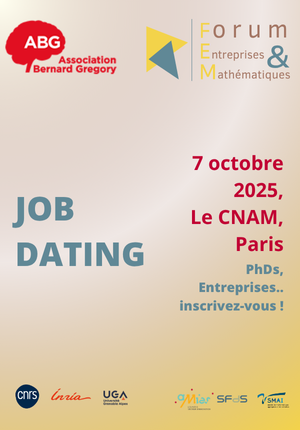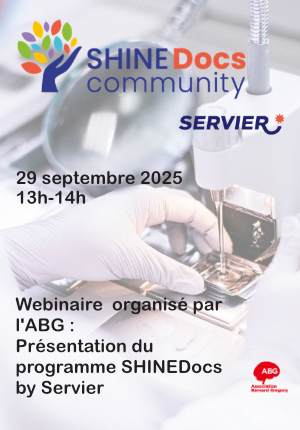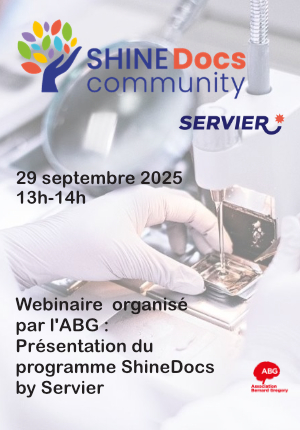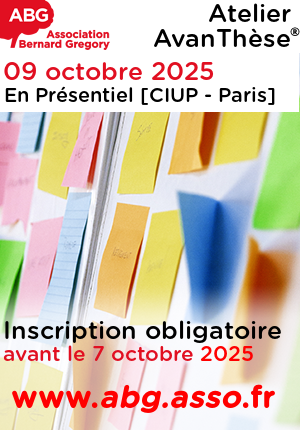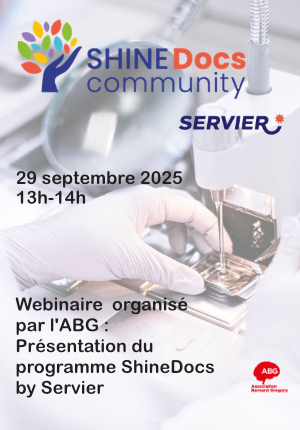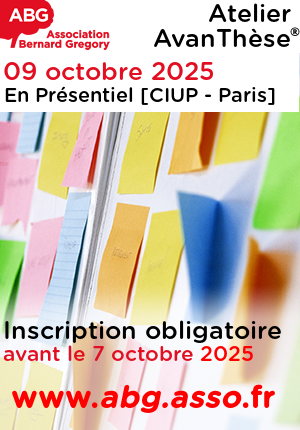Fabrication intelligente pour l'obtention de pièces bimétalliques acier/base nickel // Smart manufacturing for obtaining bimetallic steel/nickel parts
|
ABG-131617
ADUM-61964 |
Thesis topic | |
| 2025-05-01 | Public funding alone (i.e. government, region, European, international organization research grant) |
Université de Montpellier
Montpellier cedex 5 - Occitanie - France
Fabrication intelligente pour l'obtention de pièces bimétalliques acier/base nickel // Smart manufacturing for obtaining bimetallic steel/nickel parts
- Electronics
Fabrication additive, Aciers, Alliages de nickel, Contrôle du procédé
Additive manufacturing, Steels, Nickel alloys, Process control
Additive manufacturing, Steels, Nickel alloys, Process control
Topic description
Le projet s'inscrit dans le cadre d'une collaboration avec le Laboratoire de Génie de Production (LGP) de l'Université Technologique de Tarbes (UTTOP).
La thèse a pour objectif de fabriquer par procédé WAAM (Wire Arc Additive Manufacturing) des matériaux à gradients, de compositions variées, dans différentes configurations possibles grâce à la présence de deux effecteurs agissant de manière coordonnée.
La maitrise du procédé pour la fabrication de multi-matériau nécessite un parfait contrôle de l'apport d'énergie nécessaire à la fusion de la matière, et de l'apport de matière, de manière à contrôler la dilution des différents matériaux, et ainsi la composition et la microstructure des matériaux fabriqués, en particulier dans les zones de liaisons entre les différents matériaux. Pour y parvenir, la physique du dépôt pour chacun des matériaux devra être analysée dans les différentes positions. Celle-ci est notamment caractérisée par de forts gradients thermiques et une histoire thermique complexe subis au cours de la construction, liés à l'interaction entre l'arc électrique et la matière, produisant des phénomènes de transferts thermiques complexes, mais aussi dans le cas de multi-matériaux à des transferts d'espèces chimiques.
Le procédé sera instrumenté pour la mesure des gradients et histoires thermiques à l'aide de techniques classiques (thermocouples), mais aussi à partir de techniques de mesures originales développées par le LMGC (pyromètres, caméras infrarouges). Des caméras ultra-rapides seront aussi utilisées pour la visualisation du bain de fusion et du front de solidification, afin d'analyser les écoulements au sein du bain responsables des transferts de chaleur et d'espèces chimiques, et les conditions de solidification lors du dépôt des différents matériaux. Une optimisation des paramètres procédés pourra ainsi être réalisée, à partir des mesures et observations réalisées in situ et aux résultats des caractérisations menées par le partenaire LGP dans le cadre d'une seconde thèse réalisée en parallèle.
------------------------------------------------------------------------------------------------------------------------------------------------------------------------
------------------------------------------------------------------------------------------------------------------------------------------------------------------------
The project is part of a collaboration with the Production Engineering Laboratory (LGP) of the University of Technology of Tarbes (UTTOP).
The objective of this thesis is to manufacture gradient materials of various compositions using the WAAM (Wire Arc Additive Manufacturing) process, in various possible configurations thanks to the presence of two effectors acting in a coordinated manner.
Process control for multi-material manufacturing requires perfect control of the energy input required for material fusion, and of the material input, in order to control the dilution of the different materials, and thus the composition and microstructure of the manufactured materials, particularly in the bonding zones between the different materials. To achieve this, the physics of deposition for each material must be analyzed in different positions. This process is characterized by strong thermal gradients and a complex thermal history experienced during construction, linked to the interaction between the electric arc and the material, producing complex heat transfer phenomena, but also, in the case of multi-materials, the transfer of chemical species.
The process will be instrumented to measure thermal gradients and histories using conventional techniques (thermocouples), as well as original measurement techniques developed by the LMGC (pyrometers, infrared cameras). Ultra-fast cameras will also be used to visualize the melt pool and the solidification front, in order to analyze the flows within the pool responsible for heat and chemical species transfer, and the solidification conditions during the deposition of the various materials. Optimization of the process parameters will thus be possible, based on the measurements and observations made in situ and the results of the characterizations conducted by the LGP partner as part of a second thesis being conducted in parallel.
------------------------------------------------------------------------------------------------------------------------------------------------------------------------
------------------------------------------------------------------------------------------------------------------------------------------------------------------------
Début de la thèse : 01/10/2025
La thèse a pour objectif de fabriquer par procédé WAAM (Wire Arc Additive Manufacturing) des matériaux à gradients, de compositions variées, dans différentes configurations possibles grâce à la présence de deux effecteurs agissant de manière coordonnée.
La maitrise du procédé pour la fabrication de multi-matériau nécessite un parfait contrôle de l'apport d'énergie nécessaire à la fusion de la matière, et de l'apport de matière, de manière à contrôler la dilution des différents matériaux, et ainsi la composition et la microstructure des matériaux fabriqués, en particulier dans les zones de liaisons entre les différents matériaux. Pour y parvenir, la physique du dépôt pour chacun des matériaux devra être analysée dans les différentes positions. Celle-ci est notamment caractérisée par de forts gradients thermiques et une histoire thermique complexe subis au cours de la construction, liés à l'interaction entre l'arc électrique et la matière, produisant des phénomènes de transferts thermiques complexes, mais aussi dans le cas de multi-matériaux à des transferts d'espèces chimiques.
Le procédé sera instrumenté pour la mesure des gradients et histoires thermiques à l'aide de techniques classiques (thermocouples), mais aussi à partir de techniques de mesures originales développées par le LMGC (pyromètres, caméras infrarouges). Des caméras ultra-rapides seront aussi utilisées pour la visualisation du bain de fusion et du front de solidification, afin d'analyser les écoulements au sein du bain responsables des transferts de chaleur et d'espèces chimiques, et les conditions de solidification lors du dépôt des différents matériaux. Une optimisation des paramètres procédés pourra ainsi être réalisée, à partir des mesures et observations réalisées in situ et aux résultats des caractérisations menées par le partenaire LGP dans le cadre d'une seconde thèse réalisée en parallèle.
------------------------------------------------------------------------------------------------------------------------------------------------------------------------
------------------------------------------------------------------------------------------------------------------------------------------------------------------------
The project is part of a collaboration with the Production Engineering Laboratory (LGP) of the University of Technology of Tarbes (UTTOP).
The objective of this thesis is to manufacture gradient materials of various compositions using the WAAM (Wire Arc Additive Manufacturing) process, in various possible configurations thanks to the presence of two effectors acting in a coordinated manner.
Process control for multi-material manufacturing requires perfect control of the energy input required for material fusion, and of the material input, in order to control the dilution of the different materials, and thus the composition and microstructure of the manufactured materials, particularly in the bonding zones between the different materials. To achieve this, the physics of deposition for each material must be analyzed in different positions. This process is characterized by strong thermal gradients and a complex thermal history experienced during construction, linked to the interaction between the electric arc and the material, producing complex heat transfer phenomena, but also, in the case of multi-materials, the transfer of chemical species.
The process will be instrumented to measure thermal gradients and histories using conventional techniques (thermocouples), as well as original measurement techniques developed by the LMGC (pyrometers, infrared cameras). Ultra-fast cameras will also be used to visualize the melt pool and the solidification front, in order to analyze the flows within the pool responsible for heat and chemical species transfer, and the solidification conditions during the deposition of the various materials. Optimization of the process parameters will thus be possible, based on the measurements and observations made in situ and the results of the characterizations conducted by the LGP partner as part of a second thesis being conducted in parallel.
------------------------------------------------------------------------------------------------------------------------------------------------------------------------
------------------------------------------------------------------------------------------------------------------------------------------------------------------------
Début de la thèse : 01/10/2025
Funding category
Public funding alone (i.e. government, region, European, international organization research grant)
Funding further details
Concours pour un contrat doctoral
Presentation of host institution and host laboratory
Université de Montpellier
Institution awarding doctoral degree
Université de Montpellier
Graduate school
166 I2S - Information, Structures, Systèmes
Candidate's profile
Ingénieur ou Master en mécanique ou sciences des matériaux.
Compétences en mécanique du solide et en métallurgie requises.
Engineer or Master's degree in mechanics or materials science. Skills in solid mechanics and metallurgy required.
Engineer or Master's degree in mechanics or materials science. Skills in solid mechanics and metallurgy required.
2025-09-30
Apply
Close
Vous avez déjà un compte ?
Nouvel utilisateur ?
More information about ABG?
Get ABG’s monthly newsletters including news, job offers, grants & fellowships and a selection of relevant events…
Discover our members
 SUEZ
SUEZ  MabDesign
MabDesign  Ifremer
Ifremer  CASDEN
CASDEN  TotalEnergies
TotalEnergies  Groupe AFNOR - Association française de normalisation
Groupe AFNOR - Association française de normalisation  Nokia Bell Labs France
Nokia Bell Labs France  Généthon
Généthon  Aérocentre, Pôle d'excellence régional
Aérocentre, Pôle d'excellence régional  MabDesign
MabDesign  ADEME
ADEME  Tecknowmetrix
Tecknowmetrix  ANRT
ANRT  ONERA - The French Aerospace Lab
ONERA - The French Aerospace Lab  Institut Sup'biotech de Paris
Institut Sup'biotech de Paris  Laboratoire National de Métrologie et d'Essais - LNE
Laboratoire National de Métrologie et d'Essais - LNE  CESI
CESI  PhDOOC
PhDOOC  ASNR - Autorité de sûreté nucléaire et de radioprotection - Siège
ASNR - Autorité de sûreté nucléaire et de radioprotection - Siège

